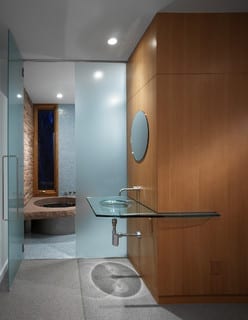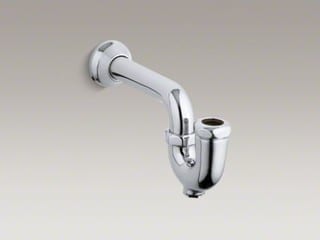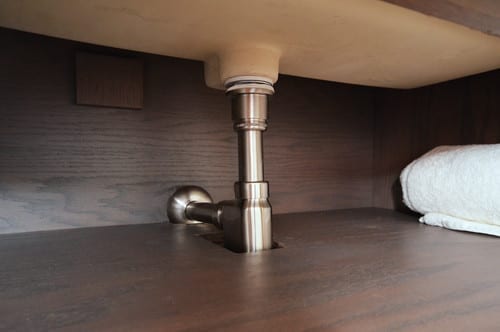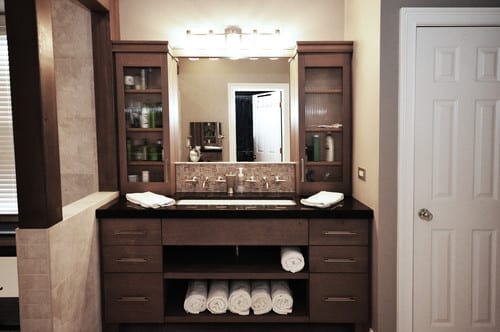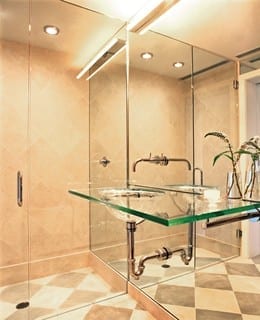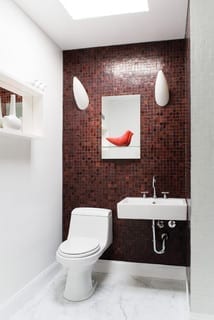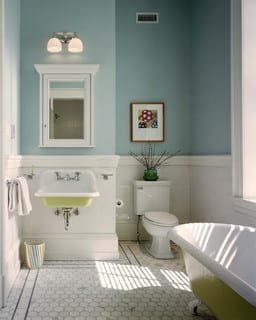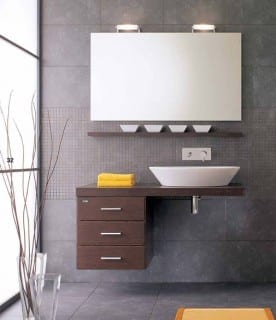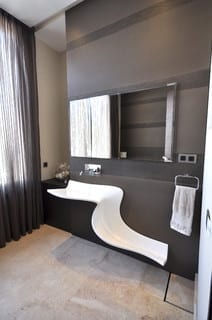Article By: John Whipple
Many modern and classic sink designs expose our waste and water supply lines. If your new sink is going to show off your plumbing, you’ll want to choose a good sink trap — specifically a P-trap, named for its shape, like the letter “P” — and matching sink fittings.
There are two basic kinds of P-traps: A European-style P-trap has no U-shaped pipe, while the North American style does. Regardless of which shape you choose, you can find a sink trap in all kinds of materials — including nickel, oil-rubbed bronze, stainless steel, brass and copper — to coordinate with your bathroom’s style.
Your sink trap holds back a little water after each use to keep air from your sewer pipes from coming back into your home. Consistent sink use, from simply running the tap to washing your hands, keeps the system working well.
In seldom-used bathrooms, water in the trap slowly evaporates. If you have a guest bath you don’t use very often, get into the habit of sending a little water down the sink from time to time to maintain the proper water level in the P-trap.
Toilets need this same care; make sure you flush toilets in seldom-used bathrooms once every one to three weeks.
This shot shows a European-style sink trap, which doesn’t have the same P shape and can actually save a little more room under your sink. The water in these traps acts the same way as in the previous trap. This clever installation has a shelf notched around the well-placed trap, creating great towel storage under the sink.
Here’s a shot of the same sink in the previous photo. The installer did a great job with this setup. If you have a small vanity and need extra storage, consider using one of these European-style P-traps to save room under your sink.
Most sink traps are installed perfectly centered on the sink with the pipe running from the front of the sink to the back …
… while some installations show off the curve with the pipe run parallel to the wall, allowing you to see the full P shape.
Plan your fittings to fit the space and feel of the room. This bathroom has loads of old-home charm, and the exposed plumbing is part of that look. A sleek, modern pipe would look out of place with this sink.
If you’re planning for your golden years and want a more universal bathroom design, understand that Americans with Disability Act–compliant bathrooms have room to roll under a bathroom sink with a wheelchair. This means choosing a pipe that won’t bang anyone’s legs or knees.
Make sure the front of your sink is no higher than 34 inches off your finished flooring to comply with theNational Kitchen and Bath Association‘s planning guidelines for accessibility.
Tip: If you want more room under your sink, ask your plumber to send the sink waste line to the back wall and install the P-trap in the wall or right up against it.
Some of today’s sink designs don’t need a P-trap, like the one in this photo. This sink doesn’t even have a waste line; the water simply slides down into the shower drain!
Tip: Today a sink’s graywater (wastewater) can be used to fill the toilet and cut down on water use. If you want your home to save on natural resources, this is a great ecofriendly option.
